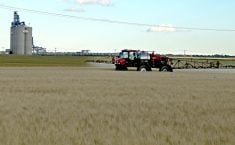There are several benefits to castrating bull calves.
Steers are less aggressive than bulls, which means fewer injuries from fighting, and they can be grouped with heifers because there is no danger of pregnancy.
However, the best reason is increased value after castrating because processors prefer steers over bulls and pay more for them.
Castration can be done at any age, but the earlier the better. Younger calves experience less discomfort, they are easier to restrain, bleed less and have lower infection rates.
Read Also

New coal mine proposal met with old concerns
A smaller version of the previously rejected Grassy Mountain coal mine project in Crowsnest Pass is back on the table, and the Livingstone Landowners Group continues to voice concerns about the environmental risks.
Try to do all the calves when they are younger than three months.
Don’t do the surgery when flies are a problem. Wet, muddy conditions are also bad because calves will lie down, contaminate their wounds and get an infection.
The restraint needed for calves depends on their age. If calves are just a few days old, they can be caught, laid on their sides, tied and castrated by one person. Older calves usually need two people. A chute is a good idea for heavier calves.
A tail restraint is useful if an older calf is castrated while standing. Lifting the tail and pulling it forward quiets the calf and prevents injury by decreasing the tendency and ability to kick.
Producers need a basic understanding of anatomy before they start castrating.
The scrotum is the skin sac that covers the testicles and holds them in position. The right and left halves of the scrotum are separated by a membrane called the septum.
Each testicle is covered by a tough, thick membrane called the vaginal tunic. During surgical castration, the vaginal tunic can be removed to minimize swelling and infection.
The spermatic cord is a tract containing the vas deferens (a tube that transports sperm) and the blood vessels that supply the testicle. It comes out of the body in the inguinal area and attaches to the top of the testicle.
Examine the scrotum and its contents to make sure the anatomy is normal. There are two conditions to watch for that should stop castration if they exist:
Cryptorchidism – Only one testicle is palpable in the scrotum. The other is hidden in the abdomen. About one in 200 calves are afflicted with this heritable abnormality.
Inguinal hernia – Intestines or fat flow through an opening from the abdomen and fall into the scrotum. One side of the scrotum will be swollen near the top. When the scrotum is palpated, both testicles and a soft mass above one of them can be felt.
Complications can occur. If there are signs of infection, treat with antibiotics.
















